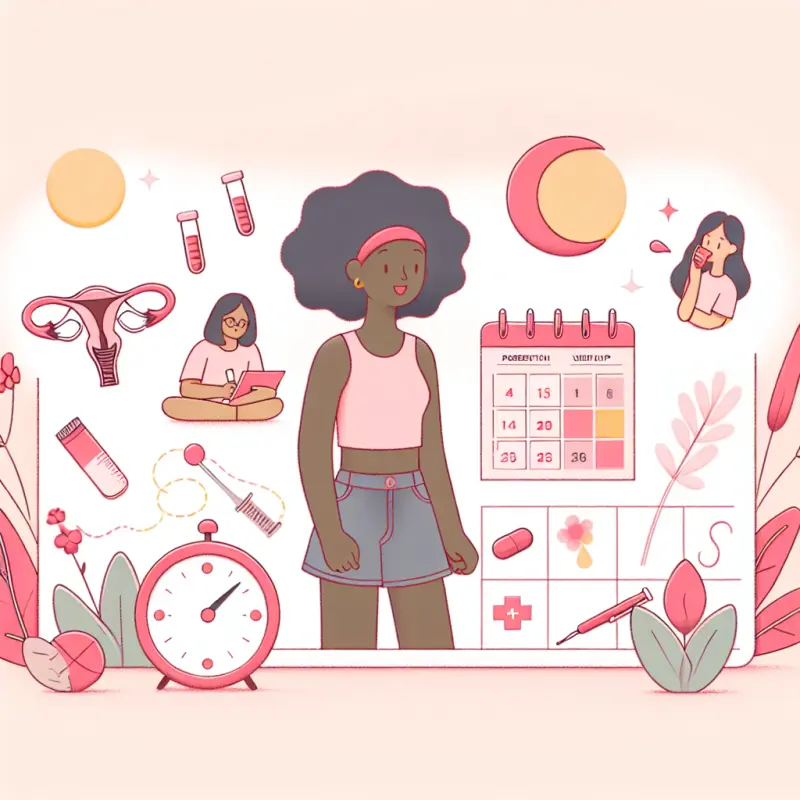Menstruation in Adolescence: What’s Normal and When to Seek Help

Menstruation in Adolescence: What’s Normal and When to Seek Help
Introduction
Menstruation is a natural and essential part of a female's reproductive cycle, marking the onset of puberty and the transition into womanhood. For many adolescents, the first period, or menarche, is a significant milestone. However, the process can also be fraught with anxiety, misconceptions, and concerns about what is considered normal. Understanding the typical patterns of menstruation during adolescence and recognizing when to seek medical advice can empower young individuals and their guardians to navigate this vital phase of life with confidence and knowledge.
In this article, we will explore the various aspects of menstruation during adolescence, including what to expect, common challenges, and signs that may indicate a need for medical attention. Our aim is to provide a comprehensive guide to help adolescents and their families understand this natural process better.
The Onset of Menstruation
What is Menarche?
Menarche is the term used to describe a girl's first menstrual period. It is a key event in puberty, marking the beginning of reproductive capability. The age at which menarche occurs can vary significantly, but it typically happens between the ages of 9 and 16, with the average age being around 12 to 13 years old.
Factors Influencing Menarche
Several factors can influence the timing of menarche:
- Genetics: A girl's genetic makeup plays a significant role in determining the onset of menstruation. If a mother or older sister experienced early or late menarche, a girl might follow a similar pattern.
- Nutrition: Adequate nutrition is crucial for the development of the reproductive system. Malnutrition or obesity can both delay or accelerate the onset of menstruation.
- Overall Health: Chronic illnesses or significant health issues can impact the timing of menarche.
- Environmental Factors: Increased stress, physical activity levels, and exposure to certain environmental toxins can also affect menstrual timing.
Understanding the Menstrual Cycle
What Constitutes a Normal Menstrual Cycle?
A typical menstrual cycle ranges from 21 to 35 days, with menstruation lasting between 2 to 7 days. However, during the first few years after menarche, cycles can be irregular as the body adjusts to its new hormonal rhythm.
Phases of the Menstrual Cycle
- Menstrual Phase: The shedding of the uterine lining, which occurs if fertilization does not take place. This is what is commonly referred to as the period.
- Follicular Phase: Begins on the first day of menstruation and continues until ovulation. The pituitary gland releases follicle-stimulating hormone (FSH), which stimulates the ovaries to produce follicles.
- Ovulation: Around the midpoint of the cycle, a surge in luteinizing hormone (LH) triggers the release of an egg from the ovary.
- Luteal Phase: Following ovulation, the body prepares for a possible pregnancy. If the egg is not fertilized, hormone levels drop, leading to menstruation.
Common Variations and Irregularities
- Irregular Cycles: It is common for adolescents to experience irregular cycles, especially in the first few years following menarche.
- Heavy Menstrual Bleeding: Also known as menorrhagia, it involves an unusually heavy or prolonged menstrual flow.
- Painful Periods: Dysmenorrhea is characterized by severe menstrual cramps.
Addressing Concerns and When to Seek Help
When to Expect Irregularities
During adolescence, irregular periods are often part of normal development. However, understanding when these irregularities might indicate a more serious issue is important:
- Persistent Irregular Cycles: If irregular cycles persist beyond three years after menarche, it may be worth consulting a healthcare professional.
- Excessively Heavy Bleeding: Soaking through a pad or tampon every hour for several consecutive hours warrants medical attention.
- Severe Pain: While some discomfort is normal, pain that interferes with daily activities needs evaluation.
Potential Underlying Conditions
- Polycystic Ovary Syndrome (PCOS): Characterized by irregular periods, excess androgen levels, and polycystic ovaries.
- Thyroid Disorders: Both hyperthyroidism and hypothyroidism can impact menstrual regularity.
- Coagulation Disorders: Conditions like von Willebrand disease can lead to heavy menstrual bleeding.
- Endometriosis: Involves tissue similar to the uterine lining growing outside the uterus, causing pain and irregular bleeding.
Seeking Medical Advice
Medical advice should be sought if:
- Menstruation has not started by age 16
- Cycles are consistently shorter than 21 days or longer than 45 days
- There is an absence of menstruation for more than three months after regular cycles have been established
- There are symptoms of anemia, such as fatigue and shortness of breath, due to heavy bleeding
Supporting Adolescents Through Menstruation
Education and Open Communication
- Educate Early: Providing education about menstruation before menarche can help reduce anxiety and misconceptions.
- Promote Open Dialogue: Encourage adolescents to discuss their experiences and concerns openly with trusted individuals.
Practical Tips for Managing Menstruation
- Maintaining a Menstrual Diary: Tracking periods can help identify patterns and irregularities.
- Healthy Lifestyle Choices: A balanced diet, regular exercise, and adequate sleep can support menstrual health.
- Pain Management: Over-the-counter pain relief and heat therapy can alleviate menstrual cramps.
Conclusion
Menstruation is a fundamental aspect of adolescent development, with a wide range of normal experiences. While some irregularities are to